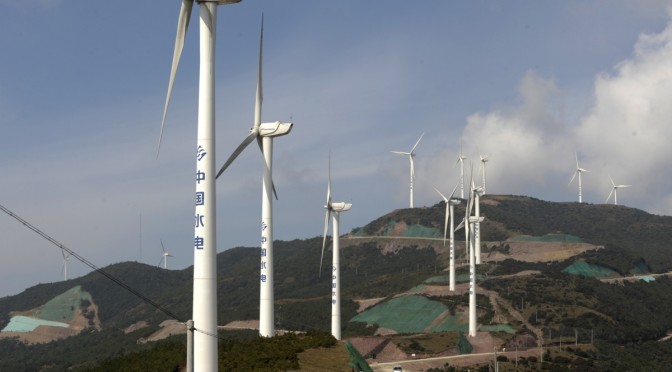- BloombergNEF (BNEF) says its latest survey of global clean energy investment indicates that Chinese solar and wind energy projects are being used to prop up its ailing economy.
“Green infrastructure is the most important investment area that China is relying on to boost its weak economy in the second half of 2022,” said Nannan Kou, BNEF’s head of China analysis.
BNEF said China recorded $41 billion of investment into large-scale solar in the first six months of the year, up 173% year on year.
“The investment growth trend follows China’s strategy to build new renewable generation capacity so that it can replace its existing coal fleet,” said Kou. “China is well on track to hit its 1,200 GW wind and solar capacity target by 2030.”
That $41 billion for big solar in China supplied the lion’s share of the $66 billion that BNEF said was devoted to utility-scale photovoltaics throughout the world in the January-June period. The United States was the world’s second-biggest large solar market in the first half, according to BNEF, with $7.5 billion invested.
With small-scale solar investment estimates bundled in, the world invested a record $120 billion in solar, including solar thermal, during the six-month period, said BNEF. That figure rose 33% year on year, despite much-publicized rising steel and polysilicon input prices, more expensive financing, logistical setbacks, and higher wholesale energy prices, according to the analyst.
While BNEF hailed a first-half record of $226 billion devoted to clean energy worldwide, but the six-month figure was actually down 12% on the investments recorded in the second half of last year, with end-of-year deadlines typically prompting more activity in the July-December period.
And while solar and wind investments roared along in the first half, the analyst noted a fall in backing for biomass, small hydro, and energy-from-waste, as well as a steepling 65% first-half, year-on-year drop in the value of public issuances of stock by clean energy companies.
Despite that fall in stock activity, Chinese solar manufacturer Tongwei raised $1.9 billion in the first half and compatriot Jinko Solar generated $1.6 billion.
With $206 billion of the $226 billion clean energy investment in the first half devoted to project backing, the pick of the bunch was the $1.1 billion invested in Huanggang Dabieshan Power Generation Co. Ltd.’s 1.3 GW solar field in China’s Hubei province.
Of the $9.6 billion recorded in private equity and venture capital backing for clean energy to the end of June, the largest deal was the $755 million secured by US solar developer Silicon Ranch Corp., according to the BNEF report.
US energy company Chevron‘s $2.8 billion acquisition of Iowa-based biodiesel producer Renewable Energy Group led clean power merger and acquisition activity in the first half, ahead of the $2.6 billion paid by JP Morgan‘s Infrastructure Investments Fund for Italian developer Falck Renewables Spa, and the $1.7 billion valuation placed on Japan Renewable Energy Corp’s buyout of Mitsubishi‘s energy and metals business, Eneos Holdings
Author: Max Hall
This article was originally published in pv magazine and is republished with permission.















